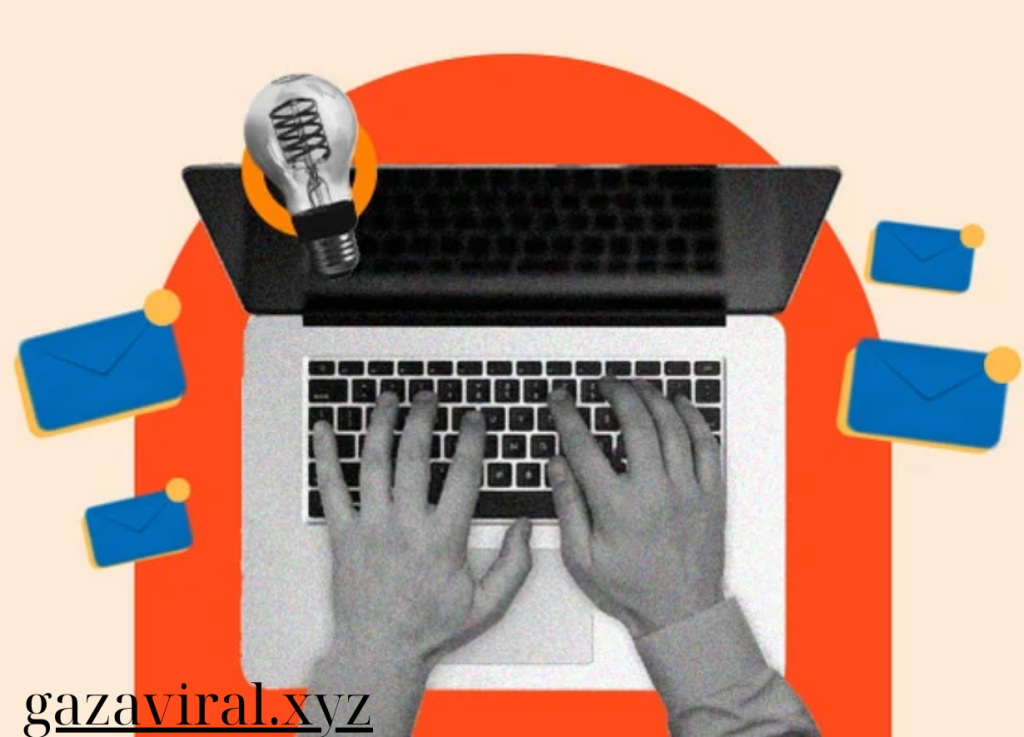Email Content Creation
Writing Compelling Email Copy: Strategies to Capture and Retain Your Audience’s Attention
Email marketing remains one of the most effective tools for engaging with your audience, driving conversions, and nurturing customer relationships. However, with overflowing inboxes, writing compelling email copy is crucial to stand out, capture attention, and keep readers engaged. Here are proven strategies for creating attention-grabbing email content that not only entices readers to open but also motivates them to take action.
1. Craft an Irresistible Subject Line
The subject line is the first thing your audience sees, making it the most critical part of your email. A compelling subject line determines whether your email gets opened or ignored.
- Keep It Short and Clear: Aim for 6-10 words or around 50 characters. Be concise and make it easy for readers to understand the value of your email at a glance.
- Create Curiosity: Use intrigue or ask a question that makes the reader want to know more. For example, “Want to Boost Sales? Here’s How” creates curiosity and encourages clicks.
- Personalize: Personalization increases open rates. Use the recipient’s name or reference a specific interest to make the subject line feel tailored. For example, “John, Get Your Exclusive Offer Today” feels more engaging than a generic subject line.
- Include Numbers or Offers: Numbers catch the eye and make subject lines more actionable. “Save 20% This Weekend Only” or “5 Tips to Improve Your Productivity” adds specificity that encourages readers to open.
Pro Tip: A/B test different subject lines to see which types resonate best with your audience.
2. Start with a Strong Opening
Once the email is opened, the first few lines are key to keeping readers engaged. Your opening needs to grab attention quickly and lead them into the main message.
- Address a Pain Point or Desire: Identify a problem your audience faces or a goal they want to achieve. This shows you understand their needs and sets the stage for your solution. For example, “Struggling to grow your email list? You’re not alone—here’s how to fix it.”
- Make It Personal: Use conversational language and speak directly to the reader. For instance, “We’ve got something special just for you” feels more engaging than a formal introduction.
- Be Clear About the Value: Immediately let your reader know why they should continue reading. For example, “In this email, you’ll discover how to save time and streamline your workflow with these 3 simple tools.”
Pro Tip: Use preheader text (the snippet of text shown after the subject line) to further entice the reader and complement your subject line.
3. Focus on One Clear Message
Each email should have a single, clear message to avoid overwhelming the reader. Whether it’s promoting a product, sharing an update, or offering a discount, focus on one central idea.
- Stay Focused: Avoid trying to pack too much information into one email. Keep your message concise and to the point, directing attention to the most important action or takeaway.
- Use Simple Language: Write in a conversational tone that’s easy to understand. Avoid jargon or overly complex sentences that might confuse readers.
- Highlight the Benefit: Focus on how your offer benefits the reader. Instead of focusing on product features, explain how it solves a problem or makes their life easier. For example, “Get organized in half the time with our new planner.”
Pro Tip: Use bullet points or subheadings to break up content and make your message scannable.
4. Incorporate Engaging Visuals
Visuals help break up text and make your email more engaging. A compelling image, graphic, or GIF can draw attention to your message and make the email more visually appealing.
- Use High-Quality Images: Include product images, lifestyle photos, or branded visuals that align with your message. For example, if you’re promoting a new product, feature an eye-catching image of the item in use.
- Incorporate Graphics or GIFs: Fun, relevant GIFs or illustrations can add personality and capture attention. However, use them sparingly to avoid clutter or overwhelming the reader.
- Use Visual Hierarchy: Design your email with a clear flow that guides the reader’s eye from the headline to the CTA (call-to-action). Use bold headlines, images, and buttons to create a visual journey through the content.
Pro Tip: Ensure that all images are optimized for quick loading and include alt text for accessibility and SEO purposes.
5. Include a Clear and Compelling Call to Action (CTA)
The call to action (CTA) is the most important element of your email. It tells the reader what you want them to do next, whether that’s making a purchase, signing up for an event, or downloading a resource.
- Make It Action-Oriented: Use strong, actionable verbs in your CTA, such as “Shop Now,” “Download Free Guide,” or “Get Started Today.” This makes the next step clear and urgent.
- Highlight the Benefit: Reinforce what the reader will gain by clicking the CTA. For example, “Claim Your 20% Discount” or “Discover the Secret to More Leads.”
- Use a Button: A clickable button with contrasting colors draws attention and increases the likelihood of a click. Make sure it stands out visually and is easy to tap on mobile devices.
Pro Tip: Position your CTA strategically. Place it after delivering the key message and ensure it’s not too far down in the email. For longer emails, consider adding multiple CTAs to capture clicks at different points.
6. Personalize the Content
Personalized emails improve engagement by making the reader feel that the content is tailored specifically for them. Personalization goes beyond using the recipient’s name—it’s about creating content that speaks to their preferences, behaviors, or past interactions.
- Use Dynamic Content: Tailor the content based on the reader’s previous behavior, such as browsing history, past purchases, or demographic information. For example, “We noticed you liked our last product—here’s something similar you’ll love.”
- Segment Your Audience: Divide your email list into different segments based on user behavior, purchase history, or interests. This allows you to send more relevant messages to each group. For example, loyal customers may receive exclusive offers, while new subscribers might get an introductory welcome email.
- Personalize Offers: Send personalized recommendations or offers based on the reader’s preferences. For instance, “Here’s a 15% off coupon just for you—redeem it before it expires!”
Pro Tip: Use automated email marketing tools like Mailchimp or ActiveCampaign to set up personalized campaigns that are triggered by specific user actions.
7. Create a Sense of Urgency
Incorporating urgency in your email copy can motivate readers to act quickly. Urgency encourages readers to prioritize your offer and reduces the chances of them delaying action.
- Use Time-Limited Offers: Include phrases like “Limited Time Offer,” “Expires Soon,” or “Only 24 Hours Left” to create a sense of urgency. This makes readers feel they need to act immediately to avoid missing out.
- Highlight Scarcity: Phrases like “Only a Few Left in Stock” or “Exclusive Offer for the First 100 Customers” tap into the fear of missing out (FOMO) and drive immediate action.
Pro Tip: Use countdown timers in your emails for flash sales or limited-time events to visually reinforce urgency.
8. Proofread and Test Your Email
Before hitting send, it’s crucial to proofread and test your email to ensure it looks professional and functions correctly.
- Proofread Carefully: Double-check your email for spelling, grammar, and punctuation errors. Mistakes can make your email appear unprofessional and reduce credibility.
- Test Across Devices: Ensure your email is optimized for both desktop and mobile devices. Test how your email looks on different screen sizes and check that links and CTAs are functioning properly.
Pro Tip: Use email marketing tools to conduct A/B tests of different subject lines, CTAs, or design elements to see which variations perform better with your audience.
9. Create a Consistent Brand Voice
Your email copy should reflect your brand’s personality and tone of voice consistently. Whether you’re playful, formal, or authoritative, maintaining a consistent brand voice helps build trust and recognition.
- Align with Your Brand Identity: Ensure your email copy matches the tone and style of your other marketing materials. For example, a playful brand might use casual, fun language, while a luxury brand may adopt a more polished and refined tone.
- Speak Directly to Your Audience: Use second-person pronouns like “you” to make the email feel conversational and directed at the reader. Personalize the experience by addressing their specific needs or desires.
Pro Tip: Create an email style guide for your team to ensure consistency across all email communications.
Conclusion
Crafting compelling email copy is a blend of art and strategy. By focusing on an irresistible subject line, engaging visuals, personalized content, and a strong call to action, you can captivate your audience and drive meaningful interactions. Keep your emails concise, action-oriented, and tailored to your audience’s preferences, and you’ll see better engagement, improved open rates, and higher conversion rates over time.


